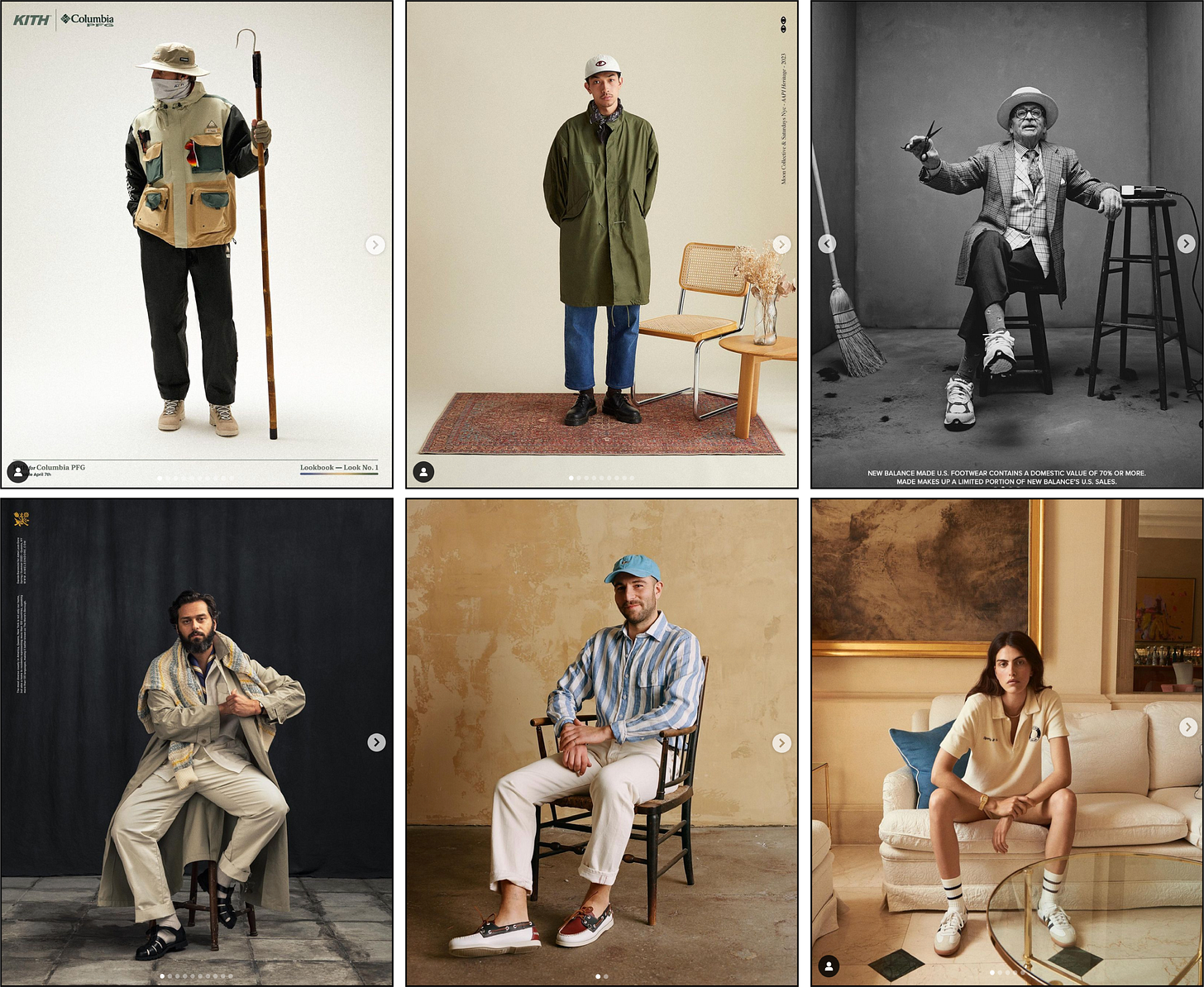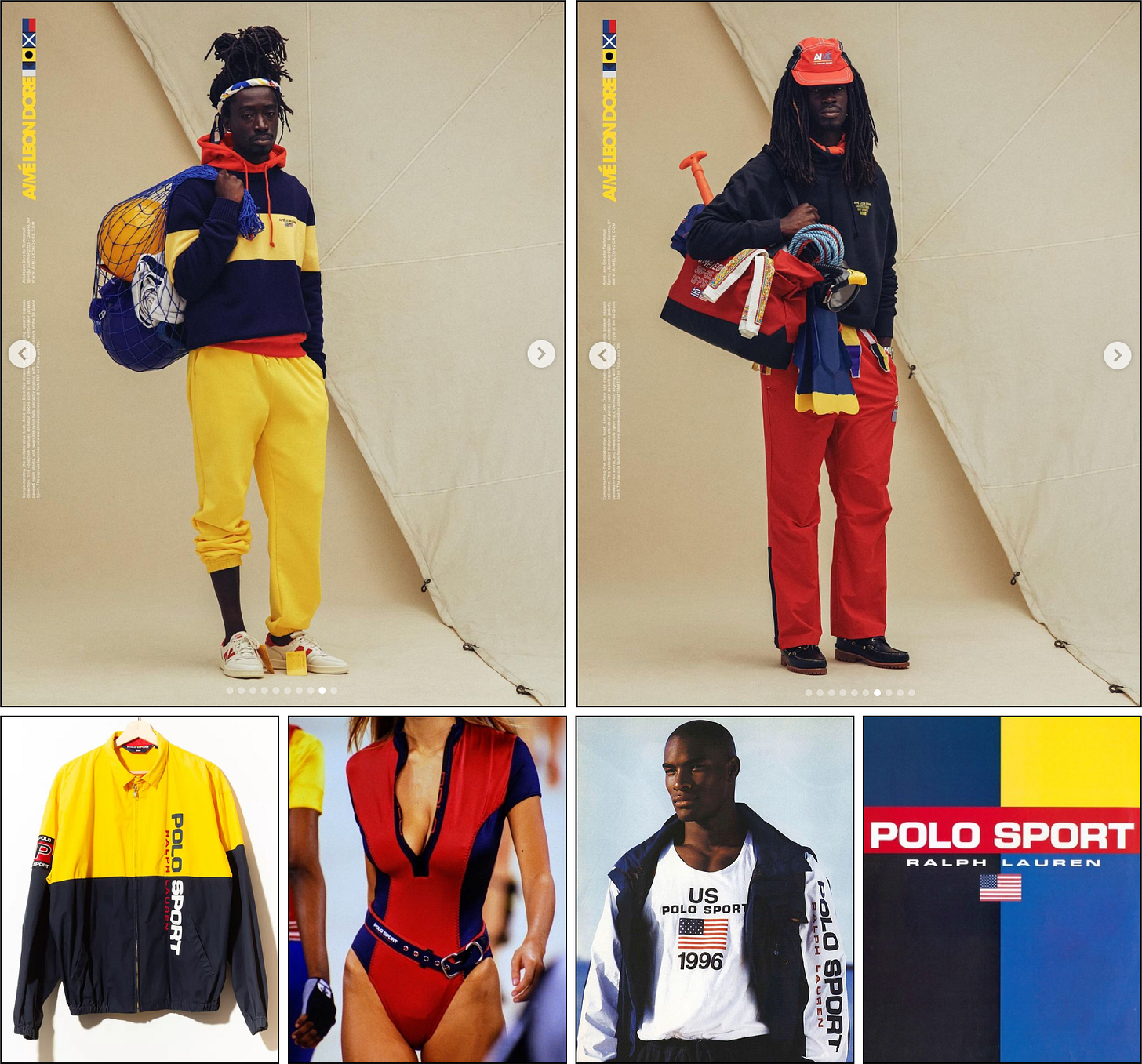Re-Creative Direction: The 20th century is on the line...
How nostalgia-driven coolness and dependence on ‘reference’ images has blurred the lines between creation and imitation.
The Impulse to Press Rewind.
That we would feel so pulled toward nostalgia in the midst of a pandemic is far from difficult to decode. Of course it wasn’t just Covid weighing on the national mood in 2020. It was skyrocketing rates of depression, the realization that Big Tech has been unknowingly and knowingly hacking our attention spans for years, it was a polarized government that had so clearly become a shell of itself.
It’s not surprising that millennials would look to their childhood that fell squarely in the 90s, - the largely optimistic years between the fall of the Soviet Union and 9/11 - as a leading source of inspiration. For all that might have been flawed about the nineties, these were arguably the final years of a collective American culture. Almost regardless of location and socioeconomic status, we are a generation connected by burned CDs and must-see-TV. Even millennials who don’t like sports can probably name at least three players from a 90s Bulls starting lineup.
With Gen Y at the creative helm of today’s most influential brands, nostalgia - especially that for recent history (the eighties through the early aughts) - has seemingly become the default driving force for creative direction.
The Archives Move to Instagram.
For a long time, a creative’s ‘references’ were a treasured body of work, a personal library often painstakingly collected over years: pages torn from magazines and newspapers, a logo on a matchbox or cocktail napkin, a piece of clothing or artifact acquired during a trip abroad, photos taken. And still, so much more solely lived in one’s memory.
Of course search engines changed the game some twenty years ago and tools like Pinterest changed it again a decade later. Yes, inspiration has been largely digital for a while now, but within the last five years, as Instagram added saved folder functions as users caught wind that they could generate huge followings without having to create much - or any - content, images from the pre-social media era have flooded the digital sphere.
Many of today’s most circulated social accounts contain no original (or new) content. There is an art form to re-circulating. Accounts like @racquetclubla masterfully arrange and rearrange old images by color and theme, creating a visual feast of a portal into the past. Suddenly, deftly arranging vintage images seemed to carry more cachet than capturing and sharing one’s own photos.
It’s an interesting phenomena when a digital platform becomes a virtual showcase of an analog era, and whether the creative minds behind popular brands were ahead of this trend or not, at some point it became impossible to ignore that a lot of people were more excited by the old than the new.
Re-Creative Direction: Where We’re Going, We Don’t Need New Ideas.

At first glance, it can feel as though the number of vintage images circulating on Instagram is infinite. One could argue that having all of these references at our fingertips has broadened our knowledge, making us more creative. With enough exposure though, one begins to see that for as much content is out there circulating, there’s so much that gets re-posted again and again.
In this environment, it’s easy for creative directors to end up consuming eerily similar visual diets, which they use to make eerily similar mood boards, which are then used to guide art direction. Even in a world where the inspiration is broadly shared, it should be possible to end up with final products that feel completely different from one another. Instead, we seem to find ourselves in an era of ‘peak imitation’, where imitating the past isn’t just accepted, but is the epitome of cool.
It’s now incredibly common for creators to use digital tools to great an analog look - Photoshop settings to generate the feeling of a print ad, Lightroom filters that imitate film.

No, it’s not new for brands to be aware of their archives, but I believe that before this hyper digital age, those leading the look and tone of influential brands were genuinely interested in going somewhere new - searching for ideas that maintained a connective thread to their past, but that also managed to contain an element of surprise and edge, ideas that pushed boundaries in some way.
If anything, it’s undeniable that casting has become much more diverse, which in and of itself can be an important commentary - the most obvious way a brand could say: this is who we were and this is who we are.
Still, as positive as that is, it becomes much less inspired when it begins to feel like a formula across brands and industries - less creative risk and more of an obvious (and often calculated) expectation.
Heavy Inspiration.
Of all of the brands harnessing the potency of nostalgia, I haven’t seen anyone do it better than Aime Leon Dore. To their credit, nostalgia for an 80s/90s childhood is woven in to the brand’s DNA, which launched before Covid and before the 2016 election. But, a comparison of the brand’s early lookbooks vs. those from recent seasons tell a story of a brand that has doubled down on looking back.
It’s undeniable that ALD has been extremely influential, not just in the social sphere, but in its ability to bolster the cache (and sales) of established brands like New Balance.
Having acknowledged that, I’m fascinated by how often a very literal connection exists between their collections and Ralph Lauren Collections of a certain era (who, ironically, is also leaning fairly heavily into their archives lately). Take, for example, the ALD ‘Off Shore Capsule’ from earlier this summer. Everything from the color scheme to the bolded logo treatment to the use of flags was a clear play on mid-nineties Polo Sport.
I have to assume there’s a sense of humor wrapped into a collection like this, a playfulness in knowing that people basically just want the same thing they wanted thirty years ago, but with a different logo.
As this formula has paid off for ALD, brands in the social sphere have begun to meld to the point that it can be difficult to differentiate between them.

The Collaboration Recipe.
For a certain type of digitally native brand, a collaboration with a heritage athletic brand has become a bit of a right of passage, a passport stamp of having arrived. Ostensibly, these alliances equate to ‘win-win’s. The established business gains credibility among the cool set, who don’t associate with mainstream social channels or stores. The newer brand is able to offer a product they otherwise couldn’t manufacture, and again - gain credibility in a world where rising to the top in a crowded sea of Instagram brands isn’t easy.
The disappointment (for me at least) lies in the expectedness of it all down to the identical graphic format to announce a collaboration.
Time to Revisit the Art Department?
An unfortunate reality of today is that being bombarded with images and information feeds the belief that ‘it’s all been done’. We’re in an era where just about everything is dubbed ‘post’.
When it comes to art direction, I have to wonder if it’s time for us to stop fetishizing the past to the point that we often end up copying it. I sometimes think that our over-reliance on references may be the culprit for so much sameness - and sometimes it’s clients who are asking for it, wanting to see an image they’ve already seen, but with their product substituted in.
Perhaps the darkest thing about the gravitational pull a lot of us feel toward pre-social media era images is the subconscious awareness that everyone captured in these photos were actually living, not living to be posted. That it’s common for brands and influencers to re-create analog moments to be used as aspirational social content likely says a lot about where we are. A world where people aren’t staring at phones is more attractive, and yet most of us can’t seem to put them down.
Still, the solution might be simple. Start with a conversation. Instead of looking around at what’s been done or what everyone else is doing, think about what it is that you’re actually working on and trying to achieve, what feeling you want to give people.
It may be worth reminding ourselves that people creating in the 20th century were getting inspiration from somewhere, often without a clear starting point. The iconic campaigns that many of us idolize are iconic because they didn’t look or sound quite like anything else, but seemed to be born of imagination.
That we would ever lose sight of how amazing the human imagination is would be the clearest indicator that our best days are behind us.
Happy Friday,
A











These side by sides are killer!